Warrior Wasps
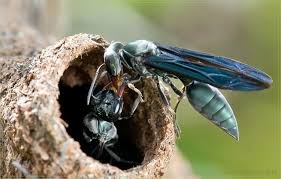
WARRIOR WASP:
KPCOFGS
Kingdom: Animalia
Phylum: Arthropoda
Class: Insecta
Order: Hymenoptera
Family: Vespidae
Genus: Synoeca
Species: Synoeca septentrionalis
Type of Wasp: eusocial paper wasps.
Nº of SPECIES: 6 described species.
(Synoeca cyanea, Synoeca chalibea, Synoeca ilheensis, Synoeca septentrionalis, Synoeca surinama and the Synoeca virginea.)
SIZE: 20 millimeters or 0.79 inches.
LIFE SPAN:
Workers: live between 12-22 days, but this depends on the species of wasp.
Queens: paper wasps queens usually live up to a year.
Males: these die soon after mating. As when the colony is mature by the end of the summer, males and new queens are produced to mate and produce new colonies the next season, but males are only used to mate and fertilize future generation queens.
QUEEN INFO:
The differences between a worker and a queen warrior wasp are indistinguishable, and the only variations that can be found are differences in their cuticular hydrocarbons, specially in their (Z)-9-alkenes.
Moreover, a nest can contain large amounts of queens, and there is no correlation between the number of queens and the development of the nest.
EGG to ADULT:
For paper wasps (warrior wasps are included) it takes between 2-3 days for the eggs to hatch.
COLONY / NEST INFO:
There has not been found any pattern in terms of the maximum number of warrior wasps that can live in a nest, but some colonies can contain up to 800 wasps and more.
The nest is usually found in rock surfaces and trees, has various cells and is covered by a ribbed envelope. It also has one or more rounded holes that work as entrances and exits to the nest.
Nests have been seen between 1.7 and 6.0 meters above the ground.
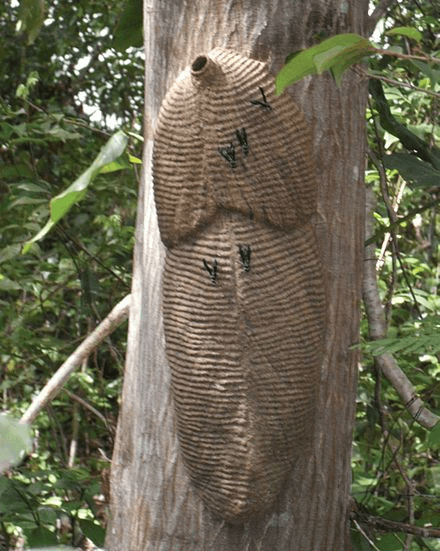
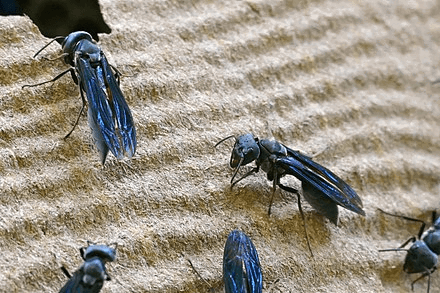
STING & DEFENSE MECHANISMS:
If it stings, the warrior wasp will probably die, which is an indicator of the power of its venom. The sting it is also barbed, like a hook or a "teddy-bear cholla" (Cylindropuntia bigelovii), which makes it harder to remove from the surface on which it has been stuck.
Apart from stinging, when predators are near the nest, warrior wasps warn each other that the colony is being disrupted by drumming the nest. This is done by scraping the walls of the nest with their mandibles, creating a loud buzzing. This is a characteristic defensive mechanism that all species of the genus Synoeca exhibit.
LOCATION MAP: it is usually found in tropical forests, with proper trees to built their nests.
It is located in the Americas and has been found as far north as Mexico, Central America, South America and the south part of its range extends into Brazil. Locations with high humidity.
A study reveals some locations for warrior wasps, although there are more in the center of South America:
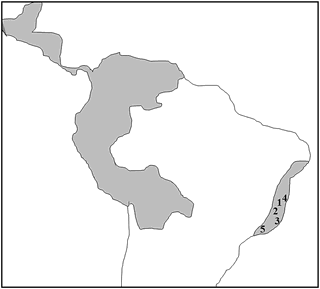
Citation of the Study:
(Santos EB, Shemilt S, de Carvalho CAL, Martin SJ (2018) Life history and chemical ecology of the Warrior wasp Synoeca septentrionalis (Hymenoptera: Vespidae, Epiponini). PLoS ONE 13(3): e0194689. https://doi.org/10.1371/journal.pone.0194689).
- Study on a World Map (with frontiers):
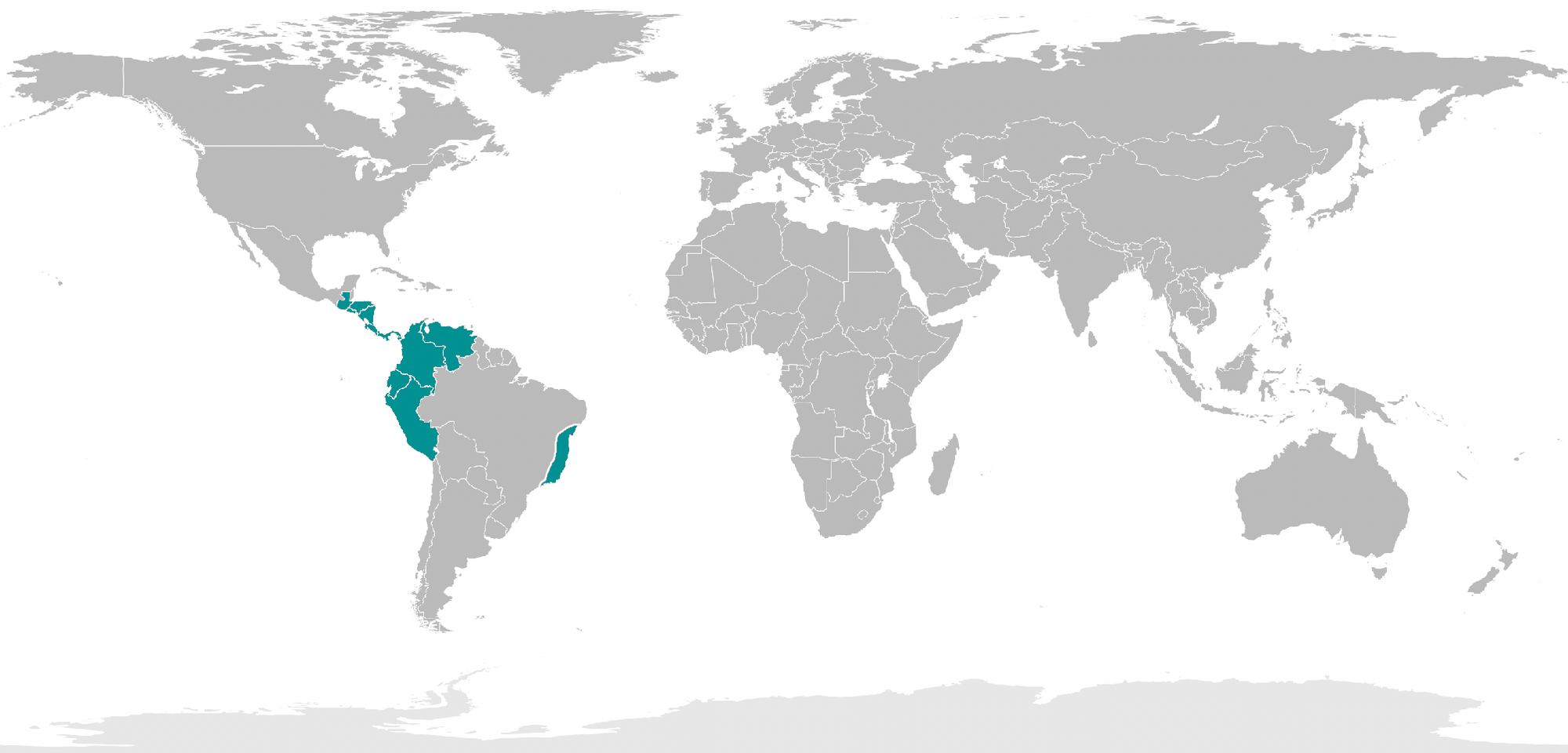
PHOTO:
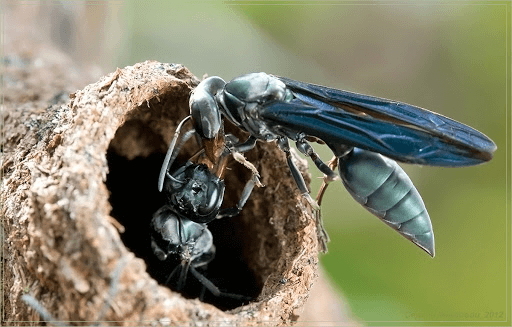
(For more information about the websites consulted in this article, see the Bibliography at the bottom of the website.)
